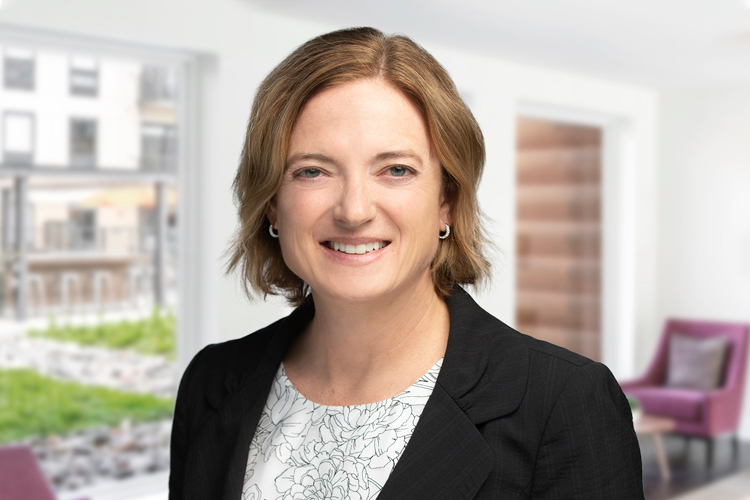By Julie Ferguson, executive vice president, senior living, Ryan Cos.
In less than a year, the oldest baby boomers will begin turning 80. By 2030, the youngest will be 65 or older.
Not only are baby boomers the largest generation, but they are projected to cause seniors to outnumber children under the age of 18 for the first time in U.S. history by 2034, according to the U.S. Census Bureau.
As time drives forward, the need for seniors housing rises. The National Investment Center for Seniors Housing & Care (NIC) projected a need for 156,000 additional senior housing units by 2025, 549,000 by 2028 and 806,000 by 2030.
While the projections clearly illuminate the demand, supply is lagging. In 2022 and 2023, very few developers broke ground on seniors housing projects because of the uncertain economic environment. And now in 2024, we’re facing another year of uncertainty with no signs of construction starts picking back up to meet anticipated demand.
When we start looking under the hood of the seniors housing sector, there are three key indicators that point to a looming seniors housing crisis.
The lack of new capital
An industry-wide investment of $400 billion is needed to complete new developments that will meet the anticipated demand. But at the current pace, less than half will be fulfilled, according to NIC.
Groups that invested in senior living between 2013 and 2019 are putting it into reverse, at least for now. Some are proceeding with caution when it comes to investing additional funds until they identify what their liabilities and exposure will be on the communities they currently own. This includes interest rate reserves or loan paydowns. Others are making efforts to raise new funds, but it’s going slower than a typical fundraising cycle. As a result, they have fewer dollars to put toward senior living. For the groups that are still investing, they’re focused on acquiring projects that are being sold at a lower rate than the current value.
Although investments have stalled, refocusing on senior living will give investors great mileage. In comparison to other real estate sectors, the financial performance of senior living has demonstrated better resilience in recent economic cycles.
The senior living sector’s annual returns through 2019 exceeded all other sectors’ returns on a long-term basis, according to the National Council of Real Estate Investment Fiduciaries (NCREIF). Plus, the National Property Index indicates that 10-year total returns for seniors housing in 2023 were the second highest.
The increase in occupancy
The data doesn’t lie. NIC Map Vision indicated that occupancy rates in 31 primary markets increased from 84.3 percent in third-quarter 2023 to 85.1 percent in the fourth quarter. The organization added that this growth was driven by “record-high rates of demand.”
Ryan’s own data also illustrates the existing and foreseeable demand. Our company, along with our partners, delivered eight senior living communities in the past two years that have opened with higher than pro-forma rents, plus increased preleasing and move-ins.
In Phoenix, the senior living community we developed and built experienced more than double the number of move-ins at an approximately 8 percent higher rental rate during the first 90 days compared to what was expected. And in Venice, Fla., a community there experienced 80 percent higher move-ins at an approximately 9 percent higher rental rate during the first 90 days.
The lack of housing options
One size doesn’t fit all. Several factors go into choosing seniors housing, including amenities, services, location and affordability. By not having a variety of housing options, seniors may find themselves stuck in their existing homes where they’re unable to keep up with the maintenance and may become isolated.
A large majority of older communities were built without the ability to update technology, health, safety or mobility. Now more than ever, there’s demand for updated senior living communities.
For instance, Talamore Woodbury in Woodbury, Minn., opened in spring 2023 with Foresite Healthcare’s predictive health monitoring installed in 26 private memory care rooms and 14 enhanced care rooms. The AI-based program uses sensors embedded in several areas of a unit to monitor the residents’ vital signs and mannerisms. A status report is sent to staff each morning and, if there are changes that may signal a potential emergency, a report is sent sooner.
The location of senior living communities plays a critical role in where seniors want to be. For many of the communities in our portfolio, more than 50 percent of residents choose to live in a certain community because their adult child lives in or has moved to the area. In-migration of adult children to the “Southern Smile” states has increased demand for senior living beyond traditional demographics.
Seniors are also aging in place and living longer. Bolstering social connection among older adults as well as with their loved ones is imperative. The National Council of Aging indicates that social isolation and loneliness hinders good health and puts older adults at risk for high blood pressure, heart disease, obesity, a weakened immune system, anxiety, depression, cognitive decline, Alzheimer’s disease and even death.
Reroute the commercial real estate sector focus
All signs point to the need for more seniors housing in the immediate future and beyond, but there’s a huge discrepancy between supply and demand. A seniors housing crisis is imminent, yet there’s a huge opportunity for new and existing capital sources.
Developers that start building communities now will experience above-normal lease-up velocity and higher rental rates, which will potentially result in above-average returns. There’s no stopping the largest generation from aging; our industry should continue building and investing in places for people to thrive.
Julie Ferguson is the executive vice president of senior living at Ryan Cos. and is passionate about making a positive difference in the lives of seniors.

